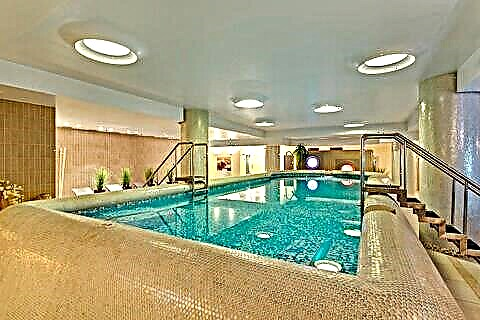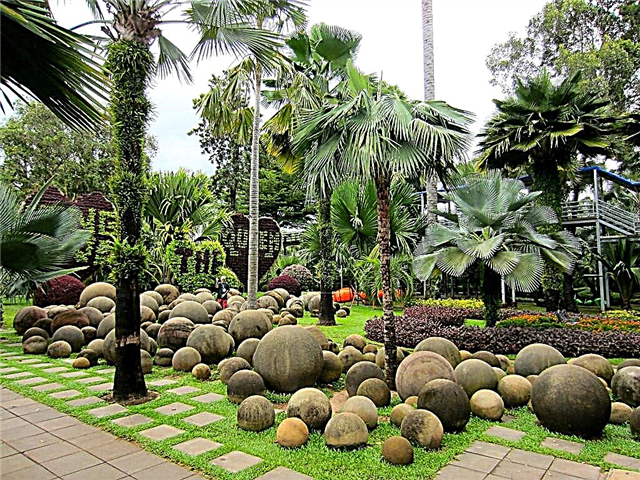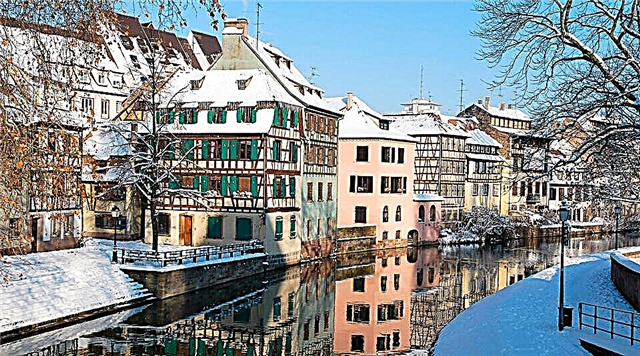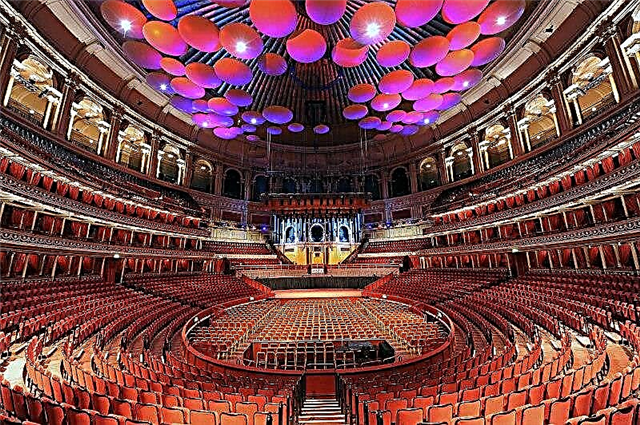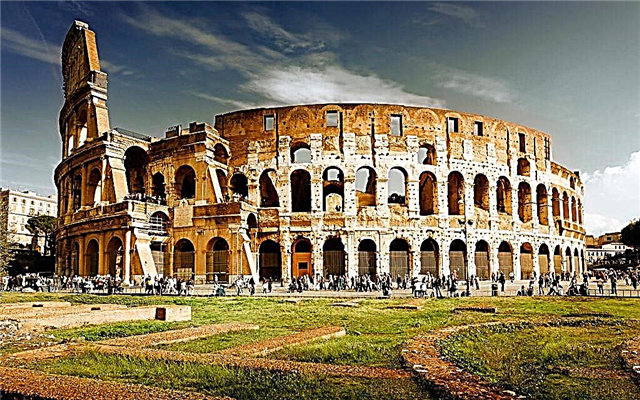The history of the Eternal City goes back centuries and is striking in its versatility. Hundreds of architectural monuments, parks, and the residential buildings themselves allow the tourist to take an excursion into the times of the great Roman Empire, and into the Renaissance and Classicism, and get to know the modern seething metropolis: from the origins to the present day. Each time, leaving Rome, there is a feeling of "not yet ...": overlooked, overlooked, overheard. It seems that no matter how many people come here, there will always be unseen sights, untouched streets and unheard legends of the old city. When planning a trip, you need to correctly understand the scale of this city-museum. If you are counting on a few days of stay, you can think over and build routes that allow you to get an all-encompassing experience. We will tell you what you can see on your own in Rome in four days.
First day
Spend your first day in Rome exploring the historic city. The main attractions that have survived from the Antiquity period are located rather compactly. And they are ideal for sightseeing on foot. It is better to start the program from the Colosseum, moving from which you can successively see other buildings.
Coliseum

Looking at the tourist map of the central, historical part of Rome, you instantly get the feeling of its enormous size and complexity. But this is far from the case. The main sights of the ancient city are located compactly, and acquaintance with the old city is well within the walking routes. The start for our route of the first day, of course, will be the symbol of Ancient Rome - the Colosseum.
The easiest way to get to the Colosseum is by metro B (blue line), the station is called COLLOSSEO. By the way, about the metro. The schemes of the Roman metro are very simple, the names of the stops are clear, but the stations themselves are unremarkable. Metro tickets are purchased from vending machines, and the cost of one trip is 1.5 €.
You will see the majestic antique building immediately when you come to the surface of the station. It is simply impossible to deceive expectations here: the Colosseum is beautiful and unusual. To get inside, you need to purchase a ticket. Arriving here in the morning, you will be just lucky, since the line of those wishing to touch the great will only consist of a couple of hundred people. For comparison, you can spend three to four hours in line during the day.

For convenience, tourists are offered to purchase a single ticket (12 €). It includes a visit not only to the Colosseum, but also to two other architectural complexes: the Roman Forum and Palatino. By the way, such a ticket is sold in addition to the entrance near the Colosseum, but also at the ticket offices from the side of Via di San Gregorio, near Palatino hill (there are always less queues here). A visit to the main ancient complexes is possible every day from 9 am until dark.
The Colosseum is striking not only for its scale, but also for its thoughtful planning. An uncountable number of exits allowed at one time 50 thousand spectators to leave the Colosseum in 5-10 minutes. The Roman Forum will greet you with a cemetery of ruined columns and temple rubble. Only imagination will help here, which will take you to the ancient world with the Arch of Titus, the Basilica of Maxentius, the Senate Hall, the Temple of Vesta, and the Via Sacra.
Basilica of Saint Clement

To the east of the Colosseum is an ancient architectural complex that has all the features of an early Christian church. The first basilica was buried in a conflagration. Red was the color of the Norman raid on Rome in the twelfth century. Surprisingly, even fire could not destroy some of the frescoes left over from the first church. Even today they have not lost the vividness of colors - a broken stained glass window of details from the life of St. Clement.
True, the design style of the frescoes is unusual - it resembles comics popular today, only the phrases uttered by the heroes are far from the canons of the high language - vulgarism and vernacular. The entrance to the basilica is free, but only to the upper level. A ticket to the lower levels will cost 5 €, but not for descending the stairs, but for diving under the arches of the third century - the ancient temple of Mithra with a marble altar.
Basilica of San Pietro in Viconi

The church appeared in Rome in the fifth century. It was here that a unique artifact was kept for a long time - the chains with which Saint Peter was chained. They were once brought from Jerusalem. True, today it is known mainly due to the fact that Julius II was buried in the local crypt. From that moment on, the architectural vector of the basilica changed dramatically: an arched gallery, a marble floor, a plafond made of wood - this became an excellent background for the creations of Michelangelo Buanarroti, who not only painted the church, but also created a stunning sculptural composition "Moses".
Like many tourist sites in Rome, the basilica is located near the Colosseum. You can get here by metro - the Colosseo and Cavour stations on line B. Or by bus to the Colosseo or Cavour-Annibaldi stops.
Colosseum, Roman Forum, Palatine Hill with one ticket - 20 €
Time entrance to St. Peter's Basilica with audio guide - € 19.50
Fast track entry to the Vatican Museums and the Sistine Chapel - 28 €
Skip-the-line: Museums, Sistine Chapel, St. Peter's Basilica - 53.90 €
Sightseeing tour by bus hop-on hop-off - 20 €
Bus ticket: 24, 48 or 72 hours - from 23 €
St. Peter's Basilica with ascent to the dome and a visit to the crypt - 49 €
Arch of Titus

The very phrase "Arc de Triomphe" inevitably evokes associations with a similar monument in Paris, but if you want to see a really great structure, you should definitely go to Rome. The Triumphal Arch of Titus is one of the two arches that have survived to this day in Forum Square, a cemetery of ancient columns. Both arches were built in the first century AD. The Parisian arch and many similar monuments are imitations on the theme of the ancient original.
Its architectural appearance is rather modest - it is decorated with three statues and reliefs in the archway, but in this modesty one can easily read the real solemnity and nobility. The height of the arch is relatively small - just over fifteen meters, but this monumental monument made of Pentel marble, brought from Attica itself, makes you freeze with delight.
Theater of Marcellus

In one tourist vector are attractions such as the Mouth of Truth, the Capitol, the Jewish Quarter and the Theater of Marcellus, which can be reached on foot from Circo Massimo station. This is perhaps one of the most significant buildings in Italy. It adorns the right bank of the Tiber. The Teatro Marcellus is the direct predecessor of the notorious Colosseum. Its construction was carried out on an unprecedented scale, which is not surprising, because the project itself was developed by Julius Caesar, and Octavian Augustus took over the implementation.
Today, the theater of Marcellus is a somewhat grotesque structure: the arches of the first tier are well preserved - festivals are held here today, the second tier is largely destroyed, and instead of the third tier, you will find buildings of the twelfth century and more modern residential buildings.
Roman forum

The Roman Forum is the stronghold of the historic city. The former market, on the territory of which the social, commercial and political life of Rome was once concentrated, is today a kind of square around which pagan temples were once located. Thanks to the excavations of the last three centuries, the Roman Forum has managed to acquire its current cultural status.
Now it is he who is centripetal, around which the Capitol, the Sacred Road, the Temple of Saturn and other monuments are located. You can get here through Foley Imperiali street, from the side of the Capitol, or past the Temple of Concord and the Mamertine prison. The entrance ticket to the territory will cost 12 €. Additionally, you can purchase an audio guide for 4 €.
Nero's golden house

Among the European sites that claimed the status of a royal residence, Nero's Golden House was considered the largest. Its construction is directly related to the events of 64 years, when most of Rome was destroyed in a fire. Today, scientists are still arguing about the size of the territory that adjoined this residence. For a better understanding, suffice it to say that its size is equivalent to the territory of the Champs Elysees, Louvre and Tuileries combined.
The center of this "little world" was, in fact, the palace, which got its name due to the presence of a gilded dome that crowned the building. The palace was built on a grand scale - a modest 36-meter statue of Nero was quite organically located in the hallway alone. It should be borne in mind that only the ruins of the Golden House itself, decorated with frescoes, remain of their former scope. Many underground rooms have survived. A visit to this place will cost 16 €.
Capitol square

The history of the origin of this place is directly related to the name of Michelangelo, who at one time actively created projects for the reconstruction of the city, some of which he managed to implement. His most significant creations are on Capitol Hill. Capitoline Square, which, thanks to the efforts of this brilliant master, acquired a trapezoidal shape, is one of them. This beautiful symmetrical ensemble is richly decorated with bas-reliefs, inscriptions and sculptural groups.
It should be borne in mind that Capitoline Square was really significant even before it became the focus of Michelangelo's work. Since ancient times, the voices of the imperial heralds sounded here, popular meetings and ceremonies were held. According to legend, it was here that the emperor Augustus heard the prophecy about the birth of Christ. The triumph of antiquity - these are the words that come to mind when you see Capitol Square.
Trajan's Forum

The construction of the forum is associated with the name of Emperor Trajan, who decided to build it after the stunning victory over the Daikir kingdom. Some see this gesture as an attempt to overshadow the glory of the campaign of Alexander the Great, but whatever the reasons, Trajan's forum became the largest building of such a plan of all that existed at that time. Art critics still speak with admiration of the structure of the forum: the graceful curve of the triumphal arch turns into a colonnade with plenty of seating. The structure is covered with a roof.
Among the most striking elements of the forum are the Ulpia Basilica and Trajan's marble column, completely entwined with bas-reliefs that have historical authenticity. The great emperor himself is buried under this column. It is impossible to miss Trajan's Forum - it is located in the area of Palazzo Valentini and Piazza Venezia. It is best to go here at dawn - there is less chance of being buried under an avalanche of enthusiastic tourists.
Trajan's market

This market is also part of the forum. In fact, it is something like a shopping center in an antique format. To raise the authority of the empire and demonstrate its riches, Trajan ordered the opening of 150 shops and workshops, which were supposed to face the square, not the city. This design is called "showcases".
In addition to retail outlets, taverns and taverns were located here. Gradually, the market grew in size, and soon it expanded to five floors. Today, on the site of the former market, there is a large museum dedicated to the Roman Forums. Its visit will cost 14 €, but it should be understood that with this ticket you can also visit a number of other museums and exhibitions.
Second day
Plan the second day of your visit to Rome for a walking tour that will saturate you with new impressions of the past and rebuild you from the active previous route.
Piazza del Popolo

It is not surprising that this very building was called "People's Square" at one time. It is still one of the most popular sites in Rome today. Piazza del Popolo is easily recognizable due to the presence of at first glance identical churches and the obelisk of Flaminia. In the evenings, many representatives of modern art trends and young people who want to spend time colorfully gather here. But this impression of eternal holiday is fleeting for this place. Once upon a time, it was here that the city guillotine was installed.
Another unpleasant fact is connected with the history of the square. The infamous emperor Nero was buried in Piazza del Popolo, but the people's dislike for him was not canceled with his death. Rumors surfaced that the tyrant's evil spirit had not rested. The decaying body was thrown into the river. And at the burial site, they built one of the twin churches, which in fact are not. One of them forms an oval, and the second a circle in the perimeter.
Via del Corso

After walking around Piazza del Popolo, don't rush to leave. It is better to continue your walk and find yourself on one of the most unusual streets in Rome - on Via del Corso, which connects Piazza del Popolo with Piazza Venezia. What is the originality of this street? It's quite simple: it is one of the oldest in the Eternal City, but it is also the most favored by shopaholics of our time.
The historic buildings are home to numerous boutiques and cafes that offer quality products at affordable prices for Rome. Paradoxically, the concentrated spirit of antiquity is in perfect harmony with the lively side of the modern metropolis.
Spanish Steps

In fact, the Spanish Steps could well be French. It is difficult to say whether in this case we would have seen the solemn baroque in travertine of 138 steps, or whether this monument would have looked completely different. One thing is for sure - the victory of the Spanish diaspora made it possible to give rise to one of the most beautiful monuments of this type in Europe. The Spanish Steps are especially beautiful in spring, when azalea is poured in a delicate color.
It is noteworthy that the stairs have different widths along their entire length. To climb it, you need to get off at the Spagna metro station, from which you can easily reach Piazza di Spagni - the square where the base of the stairs is located. At the very top is the Church of the Holy Trinity, where you can also look at, if only for the grace of the figure of Christ, created by Daniele da Volterra.
Trevi Fountain

What to do to be sure to return to Rome again? It's simple: take a coin, stand with your back to the Trevi Fountain and throw it into the water. Did you hear the splash? Great, your chance to return to the Eternal City has skyrocketed. The fountain adorns the space in front of Palazzo Poli. This pompous building was created according to the sketches of Bernini himself, who became famous as a theatrical sculptor. Today the Trevi Fountain is considered a classic place of pilgrimage for tourists.
Everyone wants to see with their own eyes a large-scale composition, in the center of which is the lord of the seas, Netun, holding the reins of a chariot-shell harnessed to seahorses. A pleasant bonus to the fountain is an extremely tempting pool in the Roman heat, where you can swim for only 200 € - this is the amount that you will have to pay a fine if the desire to cool off overpowers.
Piazza Navona

Another crown of Bernini's creativity is the Fountain of the Four Rivers, which adorns Piazza Navona. Next to the fountain is the Church of St. Agnes, a brilliant creation by Borromini. Many art historians still agree that these two monuments appeared as part of a rivalry between two geniuses of Italian architectural thought.
Piazza Navona itself appeared long before this epic confrontation. It owes its unusual shape to Julius Caesar, who built a stadium here, later destroyed to create a market. During the French occupation, equestrian competitions were held here instead of market disputes. However, the spirit of commerce comes here hand in hand with the spirits of Christmas on the eve of the holidays, when the Christmas market is set up here.
Pantheon

This pre-Christian building, erected to please all Roman deities at once, somehow managed to become a Christian temple in an incredible way. This ancient architectural object has been perfectly preserved, although it has lost its religious functions. The temple has an unusual layout - it has no windows. Light falls in a cascade from a nine-meter hole in the dome. This feature hides a metaphor for the unity of the Roman pantheon. The interior halls look amazing in winter, when snowflakes fly through the "window", forming fabulous swirls.
Initially, the Pantheon was decorated with statues of the main deities. They were arranged in such a way that during the year - with the displacement of the Earth - light alternately fell on each of them. Today they have been replaced by art from the eighteenth century. The entrance to the Pantheon is free. To get here, you need to get off at the Barberini metro station.
The third day
Dedicate this day to the Vatican, a city-state located in the heart of Rome. To enter the territory of a state within a state, you need to cross the border marked with a white line in the square in front of the main cathedral of the Catholic Church. In a single stream, tourists often do not even notice it. You can get to the entrance to the main square of the Vatican by any transport, including sightseeing buses (they all stop at St. Peter's Square). If you choose to travel by metro, it should be line A to the Ottaviano-S stops. Pietro or Cipro-Musei Vaticani, from which the Vatican is a 10-minute walk.
Vatican Museums

The Vatican Museum fund is so huge that it may take more than one day for a full inspection. The Vatican itself is a veritable museum, adorned with works by masters such as Michelangelo and da Vinci. Among all the complexes of the Vatican, the most important are museums dedicated to historical realities - especially a lot of attention is paid to the Egyptian civilization - and various objects of art dating back to the Middle Ages.
Locations such as Raphael's Stanzas, Borgia Apartments, the Vatican Library and the Tapestry Gallery are always popular. In fact, to visit all these museums, it is enough to buy a general ticket for 16 €.
Saint Paul's Cathedral

The epicenter of the Catholic world is St. Peter's Cathedral, climbing the dome of which you can see a stunning panorama of ancient Rome. The first - very modest - basilica appeared on the site of the cathedral in the fourth century. It was unremarkable until at the beginning of the sixteenth century an unexpected decision was made to renovate it. The dimensions of the modern cathedral are so huge that the largest cathedrals of the Eastern world can easily fit under its arches - there are corresponding marks right on the floor showing the contours of the supposed cathedrals.
It will take more than one hour to list all the brilliant masters who at different times worked on the appearance of the cathedral. The entrance to the cathedral is free, but in order to get to the observation deck, you will have to pay 8 € for the lift or 6 € for the desire to climb the stairs. But you need to be more careful with your desires - there are exactly five hundred steps, and the passage itself hardly reaches fifty centimeters.
Vittorio Emanuele II Bridge

This massive three-arch structure connects the Vatican and the historic center of the Eternal City. It is named after the first king of Italy. Its length is more than a kilometer, and its width reaches about twenty meters. It offers a beautiful view of the Tiber and the city overhanging the river. The sculptural decoration of the bridge is really rich and allegorical - it is enough to see the sculptural group depicting unity and freedom.
Castel Sant'Angelo

The construction of the castle began back in 135, and therefore it is not surprising that for almost two thousand years of its existence, the castle was rebuilt several times. He managed to change his status more than once. At different times, it housed an archive, a prison, a tomb, and the residence of the Popes. Today it houses a museum of military history.
The castle received its modern name in the sixth century, when another outbreak of the plague occurred in Rome. Gregory the Great, who was Pope at the time, saw the Archangel Michael on the roof. Subsequently, a statue of a marble archangel was erected on the roof. When you walk through the halls of the fortress, pay attention to the small holes in the walls, which were the cells of the prisoners. The entrance fee is 10 €.
Bridge of the saint angel

Saint Angel's Bridge is located just upstream of the Tiber. It is one of the oldest pedestrian bridges in Rome. The bridge was built in parallel with the Castle of the Holy Angel. Outside, it is faced with marble. Initially, there were no sculptures on the bridge, but in the Middle Ages there was a tradition to hang the bodies of executed criminals there. At the same time, sculptural compositions depicting saints appeared here, and after that Bernini added a dozen statues of angels to the bridge.
Palace of Justice

On the very bank of the Tiber there is an enchanting structure of the Palace of Justice. Its construction took about twenty years. It is noteworthy that the place of its construction was chosen quite symbolically - on the former Hill of the Hangers, where, in fact, the death sentences were carried out. This palace became almost the largest building in Rome, but the city authorities thought that this was not enough.
Citizens had to unite to save the surrounding buildings from destruction. If you have difficulty finding the Palace of Justice, be guided by the Napoleon Museum, which is located right on the opposite bank of the Tiber.
Fourth day
On the last day of your stay in Rome, you can continue your walking tour on the sightseeing bus, having previously determined the stops for yourself. Alternatively, carry out "point" sorties. Be determined.
Baths of Caracalla

This interesting historical complex was built by the decree of the Emperor Caracalla at the beginning of the millennium. The once huge room was covered with a massive dome, inside there were halls for gymnastics, massage, pools with hot and cold water, and even libraries. Aristocrats and nobles took baths here until the 5th century. At the time of the raid of the next barbarians, who blocked the city's aqueducts in order to kill the population with thirst, the baths were abandoned. They were again talked about at the time of random excavations carried out in the 16th century.
Nowadays, in the summertime, a huge stage is being built at the western wall of the Baths of Caracalla for concerts of opera singers and ballet performances. For visiting, the baths of Caracalla are open any day from 9 am until the end of daylight hours, except Monday, when the baths are open only until lunchtime. The entrance is paid - 6 €.
Old Appian Way
From the pages of school textbooks, we all know the main road leading to Rome. Traders, pilgrims, legionnaires passed along the Appian Way. Today this ancient "highway" is a collection of attractions. The appearance of such a number of monuments in this particular place is associated with the prohibition to bury the dead within the walls of the city. This prohibition extended to all Romans, and therefore burials were carried out along the main Roman route. Impressive tombstones, splendid statues and monuments accompany the road for many kilometers. Of great interest among tourists are the catacombs with burial niches, which sometimes go several meters underground.

The most convenient way to get to the Appian Way is the Archeological trambus, a special sightseeing bus. Landing point from Piazza Cinquecento (Termini).It runs every half an hour, the ticket costs 12 €.
At the gates of San Sebastiano, a milestone marks the beginning of the old road. Here you will see defensive structures, bastions and can visit the Museo delle Mura (ticket -3 €). Further, in the direction of Caffarella Park, it is better to continue the journey by bike, which can be rented near Domine-Quo-Vadis. A sign at the fork will point you in the direction of the medieval farm and park. The street along which you continue your journey will later return you to the Appian Way. And now the most interesting thing awaits you, the San Callisto cemetery. These are ancient underground burials of Roman bishops, consisting of five tiers. They are open to visitors all days, except Wednesday, from morning to 12 noon, then from 14:30 to 17:45. Entrance ticket - 5 €.

Continuing along the Appian Way, you can also visit the Catacombs of San Sebastiano and the Basilica of San Sebastiano, which receives visitors all days except Sunday, from morning to 12 noon and in the afternoon from 14:30 to 17:00. The cost of the visit is 5 €.
At the end of the route, you will see the remains of the temple of Romulus and the arena, which has been perfectly preserved to this day, which could accommodate about 10 thousand spectators in its stands.
Days spent in Rome will make you believe that this is a city of long walks, a city of unforgettable, vivid images and vivid impressions. He beckons to him again and again, promising to once again reveal to you the secrets of history.


